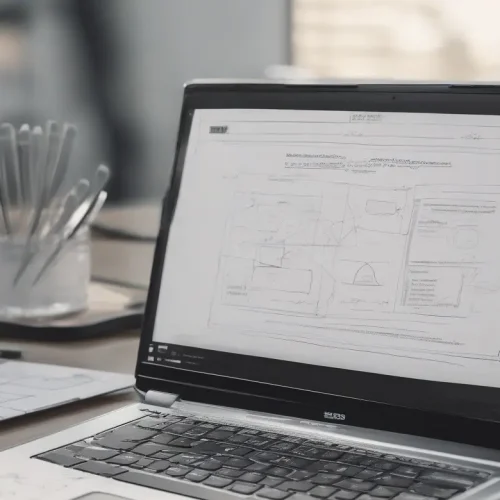Why WordPress Security is Non-Negotiable for Your Website
In the digital landscape, WordPress stands as a titan, powering over 43% of all websites on the internet. Its immense popularity, however, makes it a prime target for malicious actors. For any business owner or website manager, ensuring robust WordPress security is not just a technical task—it’s a fundamental business imperative. Overlooking it can lead to devastating consequences, including data breaches, loss of customer trust, and significant financial damage. The question is no longer *if* you should focus on security, but *how* comprehensively you can implement a defensive strategy.
WordPress itself is an inherently secure platform, with a dedicated security team constantly working to identify and patch vulnerabilities. The real danger often lies in the layers built upon it: outdated plugins, weak credentials, improper server configurations, and a lack of proactive monitoring. This article from Asarad serves as your comprehensive guide to WordPress security, moving beyond basic tips to establish a multi-layered defense. We will explore proactive measures, technical hardening techniques, and ongoing vigilance to transform your website from an easy target into a digital fortress.
The Foundation: Proactive Security Measures
Before diving into complex configurations, mastering the fundamentals is crucial. These foundational steps are the bedrock of any effective WordPress security strategy.
1. Choose a Secure WordPress Host
Your hosting provider is your first line of defense. While budget hosting can be tempting, it often comes at the cost of security. A high-quality host invests in a secure infrastructure and provides essential features that protect your site at the server level. Look for a hosting partner that offers:
- Web Application Firewall (WAF): Filters out malicious traffic before it even reaches your website.
- Automated Malware Scanning: Regularly checks your site’s files for malicious code.
- Regular Backups: Provides automated, off-site backups for quick disaster recovery.
- Server-Level Security: Implements firewalls, intrusion detection systems, and up-to-date software (like PHP and MySQL) on their servers.
- SSL/TLS Certificates: Offers free and easy installation of SSL certificates to enable HTTPS.
2. Keep Everything Updated: Core, Themes, and Plugins
The most common entry point for hackers is outdated software. Developers are constantly releasing updates that patch security vulnerabilities. Ignoring these updates leaves known backdoors open. For instance, critical vulnerabilities like CVE-2024-9234 in the GutenKit plugin were actively exploited, demonstrating how quickly attackers mobilize to target unpatched sites. Make it a routine to:
- Update WordPress Core: WordPress handles minor security releases automatically, but major updates must be initiated by you.
- Update Themes and Plugins: This is arguably the most critical area. Always use plugins and themes from reputable sources and remove any that are no longer maintained or used.
3. Enforce Strong Credentials and User Roles
Weak or stolen credentials are a leading cause of unauthorized access. A strong password policy is non-negotiable.
- Use Strong, Unique Passwords: Avoid common passwords. Use a password manager to generate and store complex passwords for your WordPress admin, database, and hosting accounts.
- Eliminate the Default “admin” Username: During installation, WordPress prompts you to create a username. Never use “admin,” as it gives attackers the first of two login credentials they need. If you already have an “admin” user, create a new administrator account with a unique name and delete the old one.
- Implement the Principle of Least Privilege: Do not grant administrator access to every user. Assign roles (e.g., Editor, Author, Contributor) based on the minimum level of access required for them to perform their tasks.
Technical Hardening: Locking Down Your WordPress Installation
With a solid foundation, the next step is to technically harden your WordPress files and database to minimize attack surfaces.
4. Secure Your Core Configuration Files
Two of the most critical files in your WordPress installation are wp-config.php and .htaccess. Securing them is paramount.
Protecting wp-config.php
This file contains your database credentials and authentication keys. If compromised, an attacker gains full control of your database. To protect it:
- Move it Up a Directory: WordPress can find this file even if it’s located one level above your public root directory (e.g., `public_html`), making it inaccessible from a browser.
- Set Strict File Permissions: Change the file permissions to 644, 640, or even 600. This prevents other users on the server from reading it.
- Deny Access via .htaccess: Add the following code to your
.htaccessfile to block any direct web access attempts.
<files wp-config.php>
order allow,deny
deny from all
</files>Hardening the .htaccess File
This powerful configuration file can be used to enhance security. You can add rules to protect your installation, including the .htaccess file itself.
<files .htaccess>
order allow,deny
deny from all
</files>
# Disable directory browsing
Options -Indexes5. Change the Default Database Prefix
By default, WordPress tables use the `wp_` prefix. Automated scripts designed for SQL injection attacks often target this default prefix. During installation, changing this to something unique (e.g., `asarad_db_`) adds a simple yet effective layer of obscurity, making it harder for automated attacks to succeed.
6. Disable Unnecessary Features
WordPress has certain features that can be exploited if not needed.
- Disable the File Editor: The WordPress dashboard allows admins to edit theme and plugin files directly. If an attacker gains access to your dashboard, they can use this feature to inject malicious code. Disable it by adding this line to your
wp-config.phpfile:
define('DISALLOW_FILE_EDIT', true);- Disable XML-RPC: This feature allows remote connections but is also a common target for brute-force attacks. If you don’t use applications that require it (like the old WordPress mobile app), it’s best to disable it using a security plugin or via `.htaccess`.
Advanced Defense: Firewalls, Monitoring, and Encryption
To defend against sophisticated and automated threats, you need to layer on advanced security tools and protocols.
7. Implement a Web Application Firewall (WAF)
A WAF acts as a shield between your website and incoming traffic. It identifies and blocks known attack patterns, malicious bots, and hacking attempts before they reach your server. WAFs can be implemented at the server level (by your host), via a cloud service (like Cloudflare or Sucuri), or through a security plugin (like Wordfence).
8. Install a Reputable Security Plugin
A comprehensive WordPress security plugin is a must. These plugins offer a suite of tools in one package, including:
- Malware Scanning: Actively scans your core files, themes, and plugins for malicious code.
- Login Hardening: Limits login attempts to thwart brute-force attacks.
- File Integrity Monitoring: Alerts you if any core WordPress files are modified.
- Activity Logging: Keeps a detailed log of all user actions on your site, helping you spot suspicious behavior.
Popular and trusted options include Wordfence, Jetpack Security, and Sucuri Security.
9. Enforce SSL/TLS and HTTPS
An SSL (Secure Sockets Layer) certificate encrypts the data exchanged between a user’s browser and your server. This prevents attackers from eavesdropping on sensitive information like login credentials and personal data. Using HTTPS is also a confirmed Google ranking factor. Most modern hosts provide free SSL certificates via Let’s Encrypt.
10. Add Two-Factor Authentication (2FA)
Two-factor authentication adds a powerful layer of security to your login page. Even if an attacker steals your password, they won’t be able to log in without a second verification code, typically sent to your smartphone. This is one of the most effective ways to block brute-force and credential-stuffing attacks.
11. Utilize HTTP Security Headers
Instruct browsers on how to behave when handling your site’s content. These headers can prevent common attacks like cross-site scripting (XSS) and clickjacking. Key headers include:
- Content-Security-Policy (CSP): Prevents XSS attacks by specifying which sources of content are trusted.
- X-Frame-Options: Stops clickjacking attacks by preventing your site from being rendered in an iframe.
- Strict-Transport-Security (HSTS): Enforces the use of HTTPS.
These can often be implemented via your `.htaccess` file or with a security plugin.
Ongoing Vigilance: Maintenance and Recovery
WordPress security is not a one-time setup; it’s an ongoing process of maintenance, monitoring, and preparation.
12. Schedule Regular, Off-Site Backups
Even with the best defenses, a breach can happen. A reliable backup is your ultimate safety net. Your backup strategy should include:
- Automation: Backups should run automatically on a regular schedule (daily, or even in real-time for e-commerce sites).
- Redundancy: Store backups in multiple, off-site locations (e.g., Google Drive, Amazon S3, Dropbox). Never rely solely on server-level backups from your host.
- Testing: Periodically test your backups to ensure they can be restored successfully.
13. Monitor and Log Everything
Keeping a detailed activity log is crucial for early threat detection. By monitoring user activity, file changes, and login attempts, you can quickly identify suspicious behavior and investigate potential breaches before they escalate. A good security plugin can manage this for you.
14. Have an Incident Response Plan
What will you do if your site is hacked? Panic is not a strategy. A documented incident response plan helps you act quickly and methodically to minimize damage. Your plan should outline steps to identify the breach, isolate the website, restore from a clean backup, change all credentials, and perform a post-mortem analysis to prevent recurrence.
Conclusion: A Continuous Commitment to Security
Securing a WordPress website is a dynamic and continuous process. The threat landscape is constantly evolving, with new vulnerabilities and attack methods emerging regularly. By adopting a layered security posture—combining proactive fundamentals, technical hardening, advanced defensive tools, and diligent maintenance—you can significantly reduce your risk. Treat your website’s security not as a checklist to be completed, but as an integral part of your operational strategy. This ongoing commitment is the key to protecting your digital assets, your reputation, and the trust of your audience.






